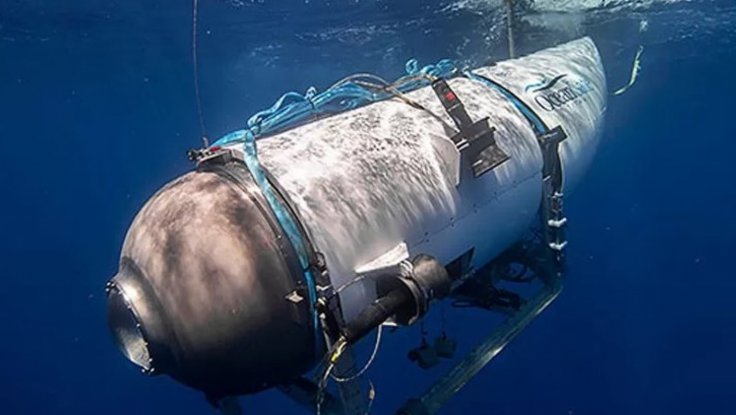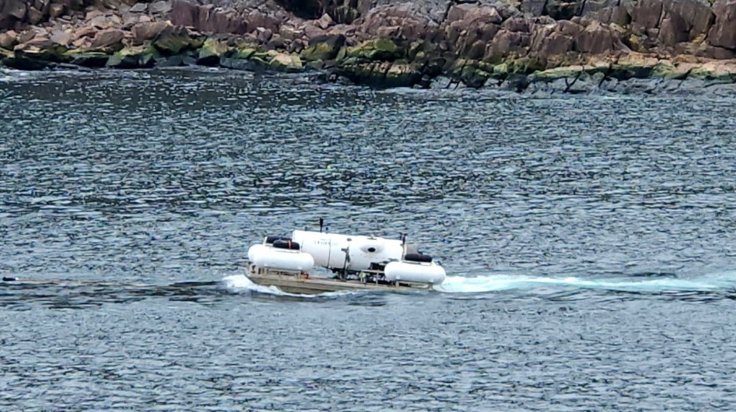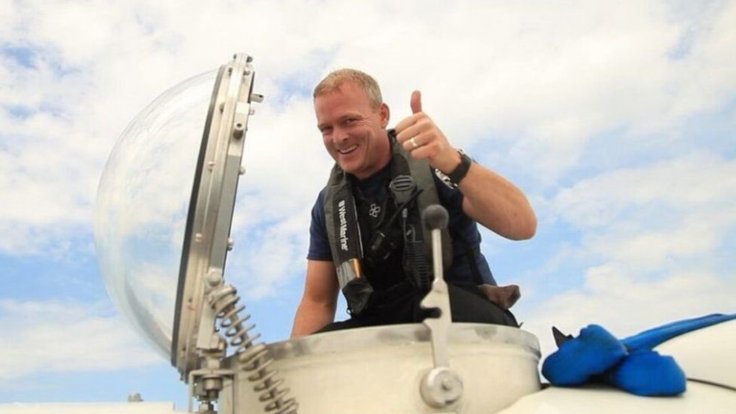The chances of recovering the bodies of the five passengers onboard the ill-fated Titanic submarine that was lost in a "catastrophic implosion", killing them instantly, are extremely bleak, according to experts. The bodies may either have either been dismembered or turned into "dust," and if not, could be turned into "mummies."
Experts claim the frigid underwater temperatures and the lack of oxygen in the pressurized vessel could turn the bodies of the tourists into mummies if they aren't recovered. The fanatic search for the five people on the Titan submarine drew to a devastating close on Thursday after a Canadian ship found debris from the vessel on the ocean floor.
Lost for Ever

The exact timing of the powerful underwater implosion during the Titan's expedition to the wreckage, located 12,500 feet beneath the ocean's surface, remains unclear. However, given the nature of the disaster, the recovery efforts are exceptionally challenging.
"This is an incredibly unforgiving environment out there on the sea floor. The debris is consistent with the catastrophic implosion of the vessel. We will continue to work and search the area down there but I don't have an answer on prospects at this time," said Rear Admiral John Mauger of the US Coast Guard.
"We'll continue to work and search the area down there but I don't have an answer for prospects at this time," he added of the bodies being recovered.
Ofer Ketter, a veteran submersible specialist and co-founder of private submarine company Sub-Merge, told the New York Post that the implosion force caused the submersible to collapse inward violently under the immense pressure of the ocean.
This force was so intense that it would have essentially disintegrated certain parts of the submersible into fine particles or dust.
"To me, it makes absolute sense that the chamber, the pressure chamber where the passengers are sitting in, did not withstand the pressure because of the material that it was built on," he told the outlet.
"And that is exactly what imploded and turned to dust. Everything else that was either made of titanium or perhaps other steels, survived, and that's what was found."

According to Ketter, the implosion would have occurred almost instantaneously, taking place within a fraction of a second or even faster.
"They never knew it happened," Ketter said of the five victims, "which is actually very positive in this very negative situation."
Dr. Peter Girguis, a professor at Harvard University and adjunct oceanographer specializing in applied ocean engineering and physics at the Woods Hole Oceanographic Institution, drew a comparison between the submersible and a scuba tank.
"When a scuba tank is overfilled, there's a safety device that releases gas very quickly," he told The Post.

"When you take the equivalent of a scuba tank and you want it to hold the pressure out, it's a different story — because if you go beyond the strength of the vessel, then it crushes or collapses," he explained.
Mummified for Ever
To put it in a simpler way, the bodies may be lost forever and they might get preserved under the sea in the form of "mummies."

According to a New York Post report, Nicholas Passalacqua, the director of forensic anthropology at Western Carolina University, said that if the five passengers perished inside the Titan, their bodies would be preserved in an unusual manner within the submersible.
"Generally in an environment without oxygen, remains will not decompose much because the micro and macro organisms that would work to consume and decompose the tissues will be unable to survive," Passalacqua told Insider.

Melissa Connors, a director at Colorado Mesa University's Forensic Investigation Research Station, agreed with the evaluation, saying that the frigid temperatures of the Atlantic Ocean would help in the desiccation of the bodies in the event of a failure in the submersible's heating system.
"So you might end up with mummies," she told the outlet.
The five tourists who lost their lives in the incident include Stockton Rush, the CEO of OceanGate; Paul-Henri (PH) Nargeolet, a former French Navy veteran; Hamish Harding, a British billionaire; Shahzada Dawood, a Pakistani businessman; and his 19-year-old son, Suleman.

The US First Coast Guard District officially announced on Thursday afternoon that debris from the Titan submarine, including its nosecone and the front end bell of the pressure hull, was discovered by a Remotely Operated Vehicle (ROV), an unmanned underwater probe.
"A debris field was discovered within the search area by an ROV near the Titanic," Rear Admiral John Mauger said, adding a "Smaller debris field within the debris field," had been found by Odysseus 6K, an ROV made by Mass. based Pelagic Research Services, which had been launched from the Canadian ship Horizon Arctic.
OceanGate informed the Coast Guard that the Titan submarine had a limited oxygen supply of 96 hours when it submerged near the coast of Newfoundland, initiating a race against time to locate the vessel and its five occupants.

The passengers were sealed inside the submersible with 17 bolts securing the hatch from the outside. Initial speculation suggested that the submersible might be trapped within the Titanic wreckage, but still intact at a depth of 12,500 feet, with oxygen running out.
The US and Canadian Coast Guards worked together to conduct the fanatic search, and numerous other countries also sent hundreds of ships to the area to help in the search.
This was one of the main issues with the rescue efforts was the depth since no successful rescue has ever been made deeper than 1,750 feet below the surface.









